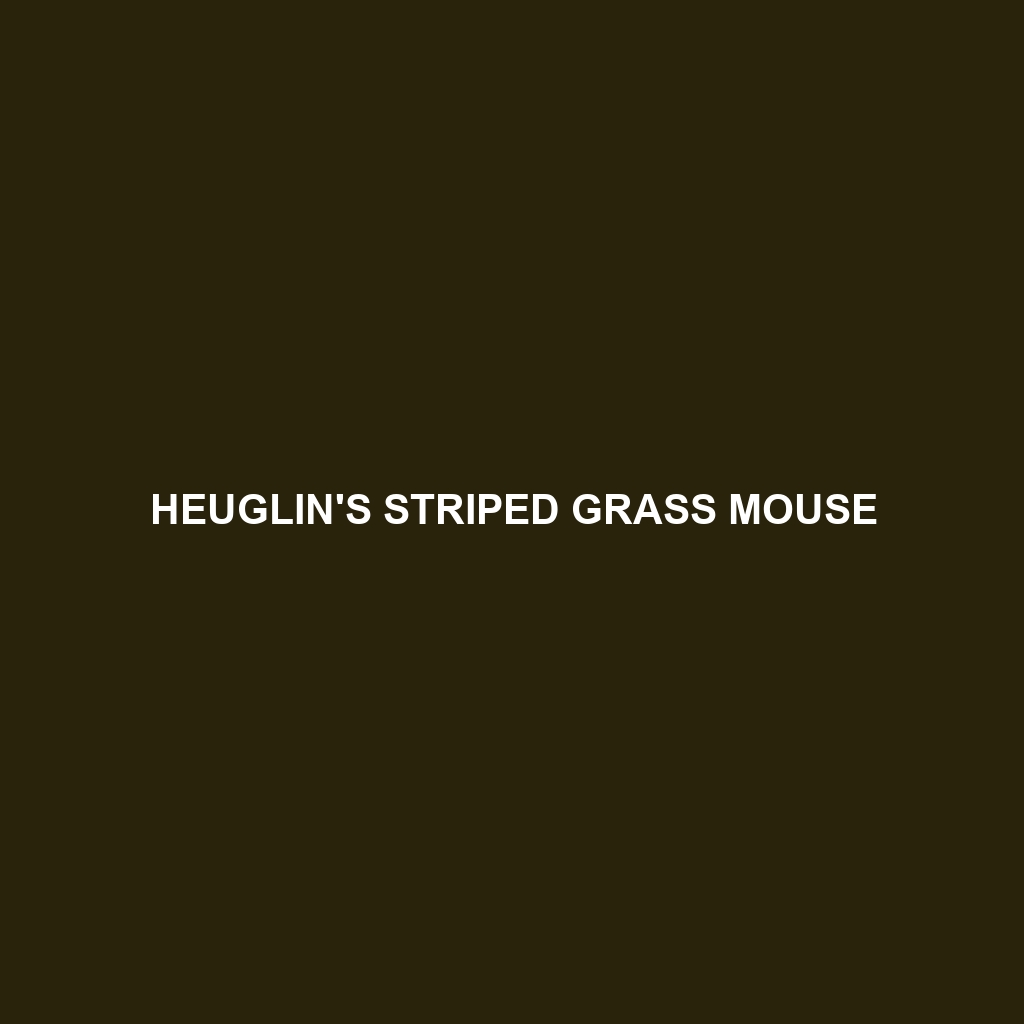Heuglin’s Striped Grass Mouse
Common Name: Heuglin’s Striped Grass Mouse
Scientific Name:
Habitat:
Heuglin’s Striped Grass Mouse is primarily found in the grasslands and savannas of Eastern Africa, particularly in countries such as Tanzania, Kenya, and parts of Ethiopia. This species prefers habitats with dense grass cover, which provides ample shelter and foraging opportunities. Their presence is often noted in areas with seasonal rainfall, contributing to a lush environment that supports their lifestyle.
Physical Characteristics:
This small rodent typically measures between 10 to 12 cm in body length, with a similarly long tail. The fur is a distinctive mix of brown and yellow hues, with black stripes running along its back, which provide effective camouflage among the grass. Its large ears and prominent whiskers enhance its sensory capability, making it highly adept at navigating its environment.
Behavior:
Heuglin’s Striped Grass Mouse exhibits nocturnal behavior, emerging primarily at night to forage and socialize. They are known for their agile movement and ability to climb, which allows them to escape predators. Social structures are often observed, with small groups forming as they share territories, contributing to their survival strategy.
Diet:
The diet of Heuglin’s Striped Grass Mouse mainly consists of seeds, fruits, and tender grass shoots. Their foraging habits are crucial for their survival, as they often store food in their burrows to prepare for dry seasons. They are also known to consume insects, providing a balanced intake of nutrition.
Reproduction:
Heuglin’s Striped Grass Mouse has a breeding season that aligns with the rainy months, typically between March and September. Females give birth to litters ranging from 3 to 7 offspring after a gestation period of about 21 days. The young are weaned within four weeks and display rapid growth, often reaching maturity in just two months.
Conservation Status:
As of the latest assessments, Heuglin’s Striped Grass Mouse is classified as “Least Concern” on the IUCN Red List. However, habitat destruction and climate change pose potential risks that could affect their populations in the future. Continuous monitoring is essential to ensure that their habitats are preserved.
Interesting Facts:
One fascinating aspect of Heuglin’s Striped Grass Mouse is its ability to adapt to varying environmental conditions. Unlike many rodents, this species can thrive in both wet and dry grasslands, showcasing an incredible resilience to habitat fluctuations.
Role in Ecosystem:
Heuglin’s Striped Grass Mouse plays a vital role in its ecosystem as a herbivore, helping to control plant growth by feeding on grasses and seeds. Moreover, they serve as prey for a variety of predators including birds of prey, foxes, and snakes, thus maintaining the balance within the food web.
